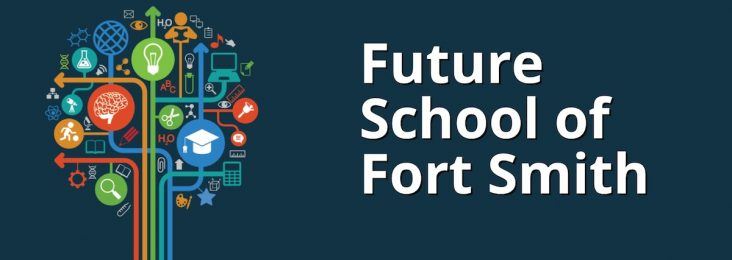Future School of Fort Smith advances in $50 million XQ super school challenge
by April 12, 2016 8:44 am 254 views

Future School of Fort Smith, the startup high school to open in downtown Fort Smith in August 2016, has advanced to the semifinals of XQ: The Super School Project. The competition boasts a $50 million grand prize that will go to five winning schools.
This challenge to “rethink the American high school” is an effort championed by Laurene Powell Jobs, a business executive, philanthropist, and wife of the late Steve Jobs, Apple’s co-founder.
The five winning schools will split the pot evenly over a five-year period, so if Future School does become a grand prize winner, it will walk away with $10 million and one-on-one support from XQ for help in implementing its strategy over the five-year period.
As one might expect, competition has been fierce with “applicants and other participants” totaling 10,000, said Russlynn Ali, the project’s CEO and former assistant secretary for civil rights in President Obama’s Education Department, in comments to USA Today. However, Future School was able to advance past the first and second rounds of consideration and has joined the final 200 competitors, dramatically improving their odds since September 2015 when the competition was first announced.
“We have about a month and a half to turn in our operations plan, including a budget of how to spend the $10 million,” Future School Director Trish Flanagan said in comments to Talk Business & Politics on Monday (April 11). “This is our community’s chance to come in and say, ‘This is what we wish we could have in a high school, and there is money behind it.’”
Flanagan is inviting interested parties from all over Fort Smith – business owners, artists, inventors, non-profit workers, or any concerned citizen – to submit their project ideas along with a plan of action and ballpark cost attached for inclusion in the final application.
“If people are serious, whether it’s mentoring plans, community arts, English language, Drivers Ed programs, anything, we urge you to get ahold of us with your basic idea plan and how much it will cost,” Flanagan said. “It’s not limited to anybody, but it has to be student-centered. We want the application to show a community-designed school, and encourage everyone to think big. This is $10 million, and it could help us fund staffing and all sorts of different program ideas.”
One example of the type of enthusiasm and innovation Future School is already getting from the community, Flanagan said, involved one man living near the school, who “offered to open up his maker-space and music workshop for us” to use in an arts-related project.
“It doesn’t matter how big or small the idea is. This is our community’s chance to sit down and really think about what kind of school we would like to have. This is about the people in the community envisioning what they want to do. I want Future School to be owned by community members as much as it is myself or anyone else,” Flanagan said.
The application’s hard deadline is May 23, and winners will be announced at an unspecified date in August. Future School will open on Aug. 22, 2016, to a planned enrollment of 150. Flanagan updated on Monday that 50 10th-grade students have been accepted thus far. Additional sophomore classes of 150 will be added each year, so that Future School will reach full enrollment of 450 students, grades 10-12, by the 2018-2019 school year.
Future School of Fort Smith is a public, tuition-free high school with a different approach from the typical K-12 public school system. The Arkansas Board of Education in November approved the charter for the school, making it the first public enrollment charter in the city.
Incorporating national and international models, the school’s mission is to help students develop their strengths and passions through a combination of class time and project-based learning. By graduation, Future School students will have three years of workforce, collegiate, and volunteer experience.
It is based largely on the Big Picture Learning (BPL) model developed in part by educator and researcher Elliot Washor. The BPL model offers a mix of classroom- and project-based learning, where students would spend two days a week outside the classroom, “interning” with professional mentors, who already work in the student’s area of interest. Fourteen years removed from its first graduating class, 70% of Big Picture students were placed in jobs or internships in their fields of interest.
More details on Future School, how to reach out and get involved in the XQ Challenge, and other initiatives are available at the school’s official website. Flanagan can be reached by e-mail at [email protected]
